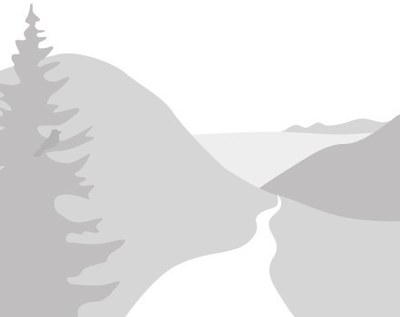
Trip Report
Vesper Peak
Vesper Peak
- Sun, Jun 15, 2014
- Vesper, Sperry & Wolf Peaks
- Scrambling
- Successful
- Road suitable for all vehicles
We experienced three incidents that were safety related. Everyone in
our party got down safely, but there are some important lessons to be
learned.
First, some background: I am a scramble leader and also a student in
the Glacier Climbing Class. Our class had a trip scheduled to climb Mt
Baker this weekend, but due to avalanche risk, the climb got cancelled
at the last minute. I hastily organized a scramble up Vesper Peak and
most of the students on the Glacier Climbing Class signed up for it.
We also had several other scramblers sign up for it, including two
students who had not done any scrambles other than the Experience
field trip. So, our group ranged from of some very experienced
scramblers to some very inexperienced ones.
The first thing that went wrong is that one of our participants
accidentally forgot his Microspikes and crampons. Even worse, when we
consolidated cars at the meeting place to drive to the trailhead, this
same person accidentally left his helmet in the car. Ironically, this
forgetful person turned out to be yours truly, the Leader. (Luckily,
one of the other participants carried both Microspikes and crampons
and lent me their Microspikes.)
The climb up the couloir to Headlee Pass was in consolidated, hard
snow. We all used either crampons or Microspikes and the people who
had crampons fared better than those in Microspikes.
Above Headlee Pass, we were in the clouds and visibility was about 100
feet. The students received experience in navigating in clouds.
Incident #1: From the tracks, we knew that one person was climbing the
peak solo in front of us. We came across the person about 500 to 600
feet in elevation below the summit. He was descending, having turned
back about 200 feet below the summit. He was bloodied and bruised. We
offered first aid but he refused. Here's what happened and the lesson
to be learned. Ascending, the snow seemed deep and uniform. Neither he
nor we came across any crevasses or bergschrunds. He was glissading
down and found one. By the time he saw it, he could not stop and slid
into it. For our descent, we sent one person plunge stepping down to
the edge of visibility to check the route, then everyone glissaded to
that person. Then the next person plunged step down to the edge of
visibility, etc. Using this technique, we found (and avoided) two
crevasses. Lesson learned: be wary of glissading in poor visibility,
even in snow fields that appear to be free of crevasses.
Incident #2: the descent down the couloir below Headlee Pass turned
out to be treacherous and far harder than anticipated, especially for
the new students. Again, those that had crampons fared better than those with Microspike. In the end, almost everyone opted to down climb,
using their ax in the self-belay position. One member (your's truly)
forgot to take his tether from his pack and tether his ax to his
pack's waist-belt. (Did I mention that this person was unusually
forgetful?) Anyway, this person was down-climbing with one hand on his
ax and one hand on the snow to steady himself when his feet slipped
and he started to fall. The ax was ripped from his hand and he was
sliding down steep, hard, endless snow without his ax. Luckily, his
Mountaineers training kicked in and he used the ax-less self-arrest
techniques he had learned (and had taught at countless field trips) of
using his elbows and his toes. (It took about 50 vertical feet for him
to stop.) In subsequent discussions with the rest of the party, it
turned out that only about a third of them had been taught this
technique. Recommendation: make sure that everyone knows this
self-arrest technique. When I teach self-arrest at the field trips, we
learn this position first, because it teaches the important
fundamentals of why you need to get your chest and stomach off the
snow. The friction of sliding along the surface of the snow is not
enough to stop you; you need to penetrate into the snow. Only by
focusing your weight into four spots (two toes and two elbows) or
three spots (two toes and one ax-head) can you penetrate the snow. And
you can't lift your body off the snow if your arms are outstretched
above your head. Second recommendation: reinforce the teaching that
both hands should always be on the ax whenever you are self-belaying.
Incident #3: Shortly after incident #2, one of the students who had
been having a particularly hard time descending and had already down
climbed about 500 vertical feet became extremely slow. She was
exhausted from down climbing for about an hour and of being terrified
the whole time. She had what can reasonably be described as a panic
attack and, even with a person on either side of her coaching her, was
incapable of proceeding. At that point, I remembered an infamous and
hilarious story from Brad and Gay Gibson about getting a person down
Red Mountain in a similar situation. We created a two-person glissade
train, with a large, strong person in front and the student sitting
right behind, her feet wrapped about the waist of the person in front.
The person in front applied full brakes and the two of them descended
all the rest of the way to the basin floor in a slow, controlled
glissade. Recommendation: this technique should be taught to leaders.
 Andy Cahn
Andy Cahn
 admin
admin